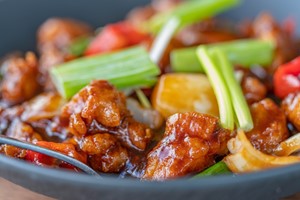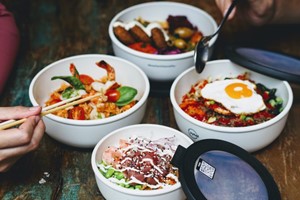India, like the rest of the world, continues to deal with the ongoing impact of the novel coronavirus. It has shifted the way we interact with the outside world. The shift is not restricted to personal interactions; it has extended the way businesses operate, industries function and how governments respond to challenges. One of the underlying imperative is the prioritization of personal and public hygiene and health above all.
The food and beverage (F&B) ecosystem is amongst a very few industries that reach to the people from all walks of life while striving to cater to varying demands of highly segmented Indian demographics. The pandemic has changed consumer behavior across the nation. There is an increased emphasis on food safety and rapid inclination towards healthier food choices. Despite concerns about pesticides, potential contamination amongst others, demand for organic, fresh and natural produce/ingredients and food products is on the rise.
The pandemic has also increased inclination towards home cooking, resulting in a wave of "home chefs and social media chefs", who are keen to emulate cooking professional style dishes at home. While serious disruptions in the F&B industry is not evident, it has to be accepted that there are disturbances that resulted in reduced access to essential and processed commodities across all socio-economic groups. Supply chain disruptions have resulted in high wastage or fresh produce and even processed foods.
In many instances, this has resulted in an inability to meet customer demand for packaged and processed food & beverages during- and post- lockdown. The situation has underlined the urgent need for ensuring uninterrupted movement of goods, especially essential commodities. The pandemic has showcased the need for shorter, sustainable food chains to ensure a continuous supply. Shorter supply chains with increasing hubs and warehouses that can double as processing facilities can not only reduce losses but also improve accessibility to small scale farmers and aggregators.
Implementation of digital technologies to track the movement of goods can improve supply chain management and also help growers access well-needed information to improve productivity while reducing transportation costs. Cold chain logistics has traditionally been a challenge, and the current scenario has established the importance of cold chain logistics as a high priority area for the Indian food industry. Despite a plethora of welfare schemes and measures to make essentials and food commodities accessible to all, access to nutritious food for all vulnerable population remains a challenge, made evident by the pandemic. Therefore, it can be expected that there would be a high demand for immunity boosting foods during and even post-COVID.
Emphasis on food with high immunity and natural/organic foods will translate to the need for clean-label ingredients and ensuring end products with the requisite nutritional profile. Immunity boosting products, functional foods supplements will gain importance. Foods supplemented with microbiome, antimicrobials, mineral and vitamins, are already on the rise and companies are focusing on advanced food formulations with added nutritional profile without compromising on taste, texture and flavor.
To keep the Indian F&B industry in line with the emerging trends, stakeholders across the value chain should work with a common goal of meeting end-consumer demand of healthier, safer food without compromising on nutrient bioavailability and shelf life. For this, technology adoption and customization is essential. With tech-driven solutions being forefront during the pandemic, technology deployment has become the need of the hour. Technologies such as High-Pressure Processing (HPP), Vacuum-frying, Freeze-drying and Individual Quick Freezing (IQF) have gained the interest of food processing companies with many start-ups and established players adopting these to meet the end consumer's need for healthier processed foods. These technologies can be cost-effective in the long run (despite being cost-prohibitive, considering the nascent stage of the frozen foods segment) compared to conventional processing techniques in minimizing nutrient losses and ensuring the desired shelf life and stability. Companies are active in deploying automation in their processing units.
Use of automation technologies has to be extended throughout the value chain to minimize food losses and supply chain delays and even, reduce pre-processing time. The advent of home chefs and emphasis on home cooking will increase the demand for value-added ingredients. While the trend itself can be considered as an immediate reaction to lockdown and is expected to slow down in the future, the need for ready-to-cook culinary pastes, sauces, and other ingredients are likely to increase, resulting in a plethora of launches of pre-prepared ingredients and intermediate products. November 2020 itself saw some of the well-known food brands introducing ready-to-prepare meal kits and expanding their portfolio of ingredients. With the emphasis on food safety and hygiene, packaging will play an essential role during the COVID and post-COVID era.
The demand for packaging with antimicrobial and barrier properties will remain stable. With technology advancements well-honed in the packaging segment, adoption of smart packaging technologies that can track and monitor the movement of goods as well as identify potential microbial contamination and spoilage will help food companies satisfy the end-customer demand for safe food. An added advantage of smart packaging technologies is the opportunity to include interactivity to the customer leading to higher brand equity.
Some examples of these include: incorporating spoilage indicators that show the use-by date and also helps to identify if the product is spoilt, time-temperature indicators that can give information on optimum storage conditions, QR tags or bar codes that allow customers to connect to the company's website for additional product and nutritional information. With continued emphasis on food safety, the correlation of brands with safety and quality is still strong. Continued brand equity will ensure brand recall and boost customer confidence.
In conclusion, the COVID-19 pandemic has showcased various shortcomings, along with potential ways to overcome these challenges. An integrated approach across the F&B value chain is needed, which is not limited to industrial participants alone. Cross-industry synergy can help in R&D, technology development and adoption, which, currently is the need of the hour. Governmental policies that incentivize agrifood businesses who provide value-addition to the F&B industry can go a long way in achieving these goals. With significant importance to health and wellness, we need an integrated approach to ensure that end-consumer requirements of high-quality, nutritional, safe food products are met.
Aarthi Janakiraman
Research Manager, TechVision
Frost & Sullivan













